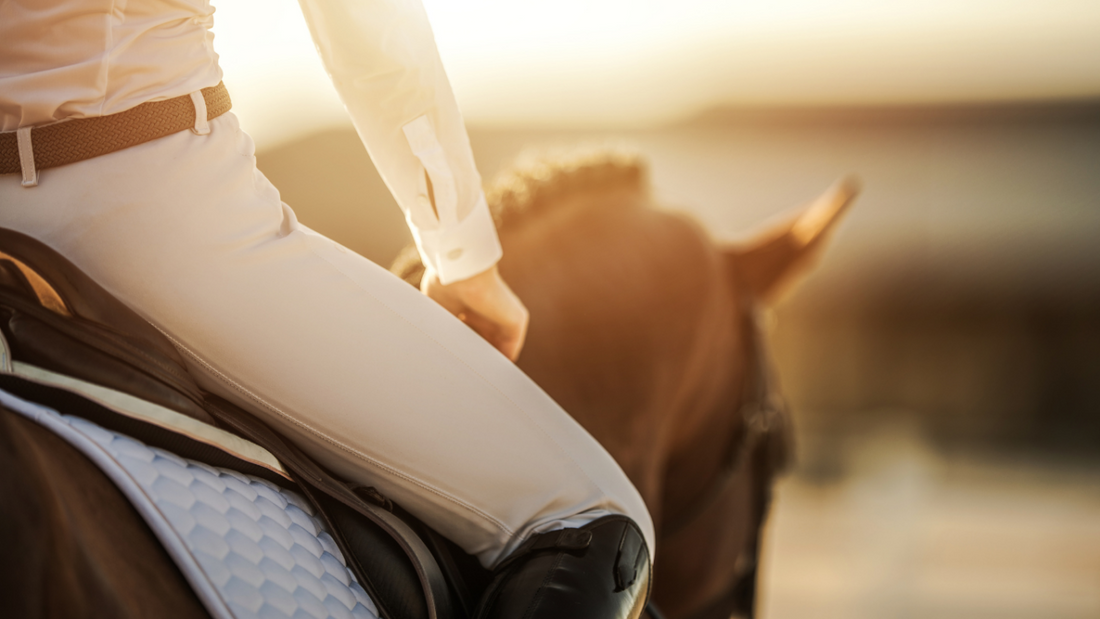Intimate chafing is a very common problem for horse riders. Other common female equestrian intimate health issues are pain, skin irritation, Saddle Paresthesia, loss of sensitivity, urinary tract infections (UTI) and urinary incontinence.
Underwear for horse riding
There is a lot to keep in mind whilst riding. With the right underwear, you can focus on performing instead of chafing, rubbing, painful skin irritations, urine leakage, abrasions, and other riding-related issues.
All of these problems can put a stop to your riding, but in many cases you can facilitate or solve the issues. Wearing the right and appropriate underwear, such as equestrian riding knickers or briefs, can keep your intimate parts healthy and happy.
Equestrian riding knickers are designed to fit snugly and not to rub whilst horse riding. They are often completely free of seams, and some are made out of a super lightweight fabric that breaths and transports moisture away from your skin.
Some riders prefer a padded knicker, some a seamless non-padded version. We are all different and it’s very individual what we prefer.
How to handle discomfort in your intimate area whilst riding
There are different ways to handle discomfort in your intimate area whilst riding.
Here are some tips:
- Speak up! It’s not ok to be in pain. Ask around, what do others do? Sharing is caring.
- Choose the right saddle. The saddle that fits your horse might not fit your anatomy.
- If you don’t have the possibility to choose the saddle, choose the right underwear. A comfortable (and sometimes padded) knicker that stays in place often does the job.
Incontinence when riding
Another intimate topic is if you experience wetness in the saddle. Urinary incontinence when horseback riding is common, but unfortunately a taboo topic. Some women experience more leakage in sitting or extended trot, some when doing hard work in the stable – like lifting a hay bale.
Horse riding is not the cause of incontinence, but incontinence can be caused by horse riding. During high-impact exercise, you will have an increased abdominal pressure, which will impact your body, pelvic floor and bladder.
Your pelvic floor’s main task is to hold the pelvic organs in place. A strong pelvic floor resists the increased pressure, but if you have a weak or damaged pelvic floor from e.g. giving birth, urine leakage can occur. Do you want to read more about different aids and treatments? Read here.
What can you do if you leak urine whilst horse riding?
To reduce the pressure on your intimate area in contact with the saddle, a padded underwear could make magic. As an add on, any accidental drops would also be absorbed. Another option would be to use Efemia Bladder Support which is a vaginal inlay. Efemia Bladder Support is placed like a tampon and supports your urethra. It reduces or even stops the urine leakage, so that you can fully focus on the riding. A recent study shows that Efemia Bladder Support reduced the urine leakage for 81% of the study participants, and when asking if they would keep using Efemia, the most frequent answer was “very likely”. You can get Efemia Bladder Support via NHS on prescription, or you can buy it directly.

